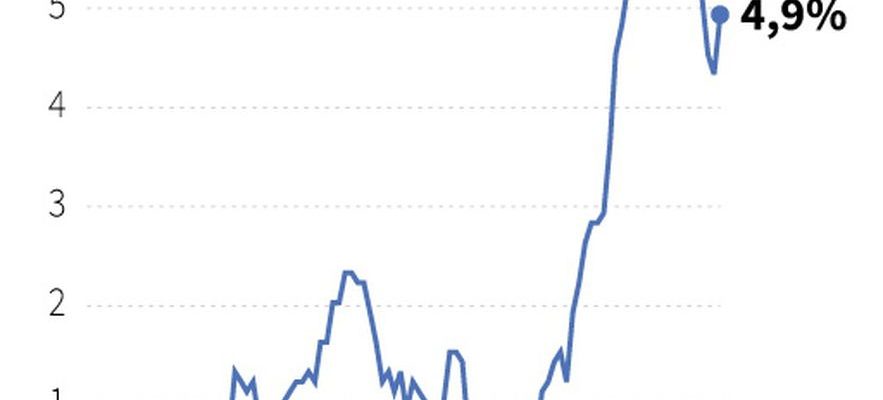Inflation, public debt, household consumption… Where is France at the end of this third quarter of 2023? The National Institute of Statistics and Economic Studies (Insee) published its latest figures this Friday, September 29. L’Express takes stock.
Public debt is falling
France’s public debt fell to 111.8% of gross domestic product (GDP) in the second quarter, compared to 112.5% in the previous quarter. Between April and June, the debt increased by 34.5 billion euros to reach 3,046.9 billion euros, but it fell in relation to GDP given the “strong growth” of the activity recorded over the period, detailed the National Institute of Statistics.
The increase in debt in absolute value comes mainly from the increase in State debt (+57 billion euros). That of social security administrations decreased by 21.6 billion euros. The debt of various central administration bodies fell by 400 million euros and that of local public administrations by 500 million euros.
Inflation stabilizes
Inflation reached 4.9% in France over one year in September, a figure identical to that of August. “The slowdown over one year in the prices of food, services and manufactured products” is “counterbalanced by the acceleration in energy prices”, comments the National Institute of Statistics and Economic Studies in its press release. , which is due to publish a second estimate of the rise in consumer prices in September in mid-October.
Inflation in France
© / afp.com/Sylvie HUSSON, Samuel BARBOSA
Household consumption down
French household spending on consumer goods fell by 0.5% in August over one month, due to the reduction in purchases of manufactured goods (-0.5%), food products (-0.5%). %) and energy (-0.6%). In July, consumption of manufactured goods increased by 1.7%, pushing up household consumption for the month, an increase revised from 0.3% to 0.4%, the Institute said. The decline in food expenditure continued in August (-0.5%) after a drop of 0.9% in July, bringing the drop to 7.3% year-on-year (between August 2022 and August 2023).
Over one month, they are pulled down, as in July, by the decline in purchases of agri-food and agricultural products, but also by that of tobacco consumption which had seen a slight increase in July. If consumption of durable goods is “stable as a whole” in August, spending on manufactured goods is pulled down (-0.5%) by the drop in purchases of clothing and textiles (-2.3% after + 0.1% in July).
This fall is explained “both by a further decline in purchases of shoes and leather and by the reduction in spending on clothing and textiles”, specifies INSEE. Consumption of other manufactured goods decreased slightly in August (-0.2% after +0.3% in July), driven by declines in purchases of DIY goods and perfumes.
In the energy sector, household spending continues to “decrease slightly” (-0.6% after -0.3% in July), driven by a further decline in purchases of fuel oil and diesel. Gas and electricity consumption is “almost stable” over one month. In August, household consumption contracted year-on-year: -1.9% compared to August 2022.
